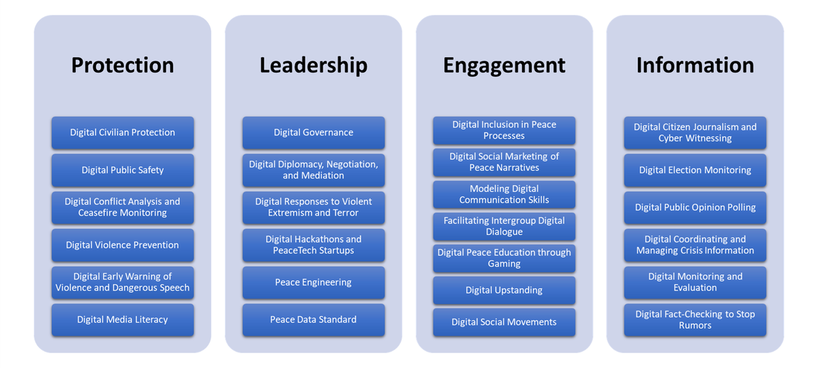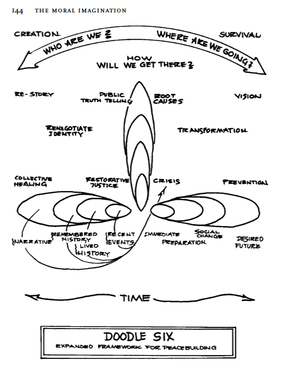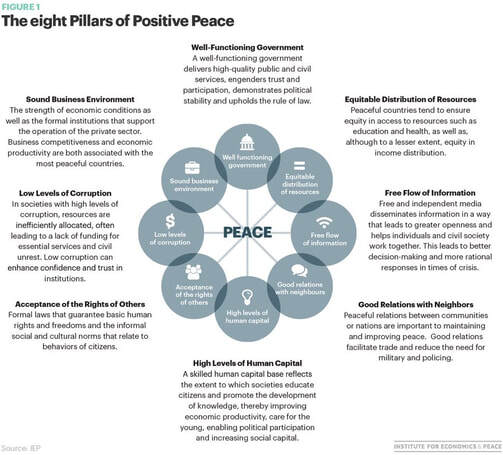- Published on
တောင်အာရှနှင့် အရှေ့တောင်အာရှ၏ ဆုံမှတ်၊ နယ်ခြားဒေသဖြစ်ခဲ့သည့် အိန္ဒိယ၊ မြန်မာ၊ ဘင်္ဂလားဒေ့ရှ်နှင့် ထိုင်းနိုင်ငံတို့၏ နယ်နိမိတ်များ စုစည်းရာအရပ်သည် ရာစုနှစ်ပေါင်းများစွာကတည်းက နိုင်ငံတော်အာဏာ၏ ပထဝီနိုင်ငံရေးပုံသဏ္ဌာန်ကို နက်နက်ရှိုင်းရှိုင်း ပုံဖော်ပေးသော ဒေသတခုဖြစ်သည်။ ဤဒေသများတွင် ခေတ်သစ်နိုင်ငံတော်များ၏ နယ်နိမိတ်မျဉ်းများသည် ဌာနေတိုင်းရင်းသားလူမျိုးစုများ၏ နက်ရှိုင်းသော သမိုင်းအစဉ်အလာနှင့် ဒေသန္တရ အချုပ်အခြာအာဏာများအပေါ် ထိခိုက်မှုကြောင့် ပွတ်တိုက်မှုများ မကြာခဏ တိုက်ဆိုင်နေတတ်သည်။ တောင်တန်းထူထပ်သော ဒေသများနှင့် သစ်တောများသည် ဤနယ်မြေများတွင် အခိုင်မာဆုံးသော နယ်နိမိတ်များဖြစ်ပြီး အစိုးရအဆောက်အအုံများ သို့မဟုတ် တရားဥပဒေဘောင်များထက် ပိုမိုထင်ရှားသည်။
နယ်စပ်ဒေသများသည် ဗြိတိသျှခေတ်က ပြောခဲ့သလို ယခုခေတ်တွင်လည်း နောက်ကျကျန်သော၊ ဖွံ့ဖြိုးအောင် လုပ်ပေးရမည့် သနားစရာ အရပ်ဒေသများဟု နိုင်ငံတော်များက ပြောလေ့ရှိသည်။ သို့သော် ယင်းဒေသများသည် ဌာနေတိုင်းရင်းသားသူပုန်ထမှုများ၊ အမျိုးသားလုံခြုံရေးဆိုင်ရာ စိုးရိမ်မှုများနှင့် ဒေသဆိုင်ရာ သံတမန်ရေးရာတို့အရ မတည်ငြိမ်သော၊ မကြာခဏ အကြမ်းဖက်မှုများဖြင့် ရောယှက်နေသော လှုပ်ရှားသည့် ဒေသများ ဖြစ်သည်။ ကိုလိုနီအင်ပါယာများက အလျင်အမြန် ဆွဲပေးခဲ့သော နယ်မြေမျဉ်းများနှင့် အမျိုးသားရေး စိုးရိမ်မှုများကြောင့် ခိုင်မာလာသော နယ်နိမိတ်များသည် ကိုယ်ပိုင်အုပ်ချုပ်ခွင့် သို့မဟုတ် လွတ်မြောက်မှုတော်လှန်ရေးအတွက် လှုပ်ရှားမှုများကို ဆက်လက်လုပ်ဆောင်ရန် ပထဝီဝင်အနေအထား၊ ဆွေမျိုးနီးစပ်မှုနှင့် နိုင်ငံရေးမရေရာမှုတို့ကို အသုံးချသော သူပုန်လှုပ်ရှားမှုများဖို့ ရှေ့တန်းစစ်မျက်နှာများ ဖြစ်လာခဲ့သည်။
မြန်မာနိုင်ငံသည် တိုင်းရင်းသားလက်နက်ကိုင်အဖွဲ့အစည်း (EAOs) ဒါဇင်ချီ၍ရှိပြီး ထိန်းချုပ်မှုအတွက် အပြိုင်အဆိုင် လှုပ်ရှားနေသော ဒေသဖြစ်သည်။ ကိုလိုနီနယ်နိမိတ်များ၏ အမွေအနှစ်သည် ဤနေရာတွင် အထူးထင်ရှားလှသည်။ ချင်း၊ နာဂ၊ ကူကီး-ဇိုမီနှင့် ကရင်လူမျိုးများအပြင် အခြားသော ဌာနေတိုင်းရင်းသားအုပ်စုများသည် သဘာဝ သို့မဟုတ် ယဉ်ကျေးမှုဆိုင်ရာ ကွဲလွဲမှုများကြောင့်ထက် အုပ်ချုပ်ရေးဆိုင်ရာ အမိန့်များဖြင့်သာ ခွဲခြားခံခဲ့ရသည်။ ကိုလိုနီနယ်ချဲ့ပေးသော နယ်မြေမျဉ်းများနှင့် အုပ်ချုပ်ရေးယန္တရားကိုလည်းကောင်း၊ အမျိုးသားနိုင်ငံထူထောင်ရေး အိပ်မက်ကိုလည်းကောင်း နောက်အစိုးရများက ဆက်ခံခဲ့ကြသည်။ ယင်းမျက်နှာစာအောက်တွင် ဆက်လက်ဖြစ်ပွားနေသော သူပုန်ထမှုများသည် လူမျိုးစုအရေးမျှသက်သက်မဟုတ်ဘဲ လွှမ်းမိုးသော နိုင်ငံတော်အမြင်များက နိုင်ငံရေးအသိအမှတ်ပြုမှုကို ငြင်းပယ်ထားသော ဌာနေအမျိုးသားလူထုများနှင့် နိုင်ငံရေးအမွေအနှစ်တို့၏ ရှင်သန်ရပ်တည်ရေးအတွက် ဖြစ်သည်။ ဥပမာအားဖြင့် ချင်းအမျိုးသားတပ်ဦး (CNF) သည် အိန္ဒိယနိုင်ငံ မီဇိုရမ်နှင့် ဘင်္ဂလားဒေ့ရှ်နိုင်ငံ စစ်တကောင်းတောင်တန်းဒေသရှိ မျိုးစုဆွေမျိုးနီးစပ်မှုများကို အကျိုးရှိရှိ အသုံးချနိုင်သည်။ အလားတူပင် ကရင်အမျိုးသားအစည်းအရုံး (KNU) ၏ ဆယ်စုနှစ်များစွာကြာသော ခုခံမှုသည် ယင်း၏ စစ်ရေးစွမ်းရည်သာမက ထိုင်းနိုင်ငံရှိ ကရင်အသိုင်းအဝိုင်းများနှင့် ထိုင်းနိုင်ငံတော်၏ မဟာဗျူဟာမြောက် ထောက်ခံမှုအပေါ်တွင်လည်း တည်ရှိသည်။
ဤနယ်စပ်ဖြတ်ကျော် လူမျိုးစုစည်းလုံးညီညွတ်မှုများသည် နိုင်ငံတော်၏ အချုပ်အခြာအာဏာဆိုင်ရာ စိတ်ကူးကို ရှုပ်ထွေးစေသည်။ ချင်းတောင်တန်းနှင့် လုရှိုင်းတောင်တန်းများ၏ နာဂမြေတွင် “ဇို” ဟုခေါ်သည့် တောင်ပေါ်သားများ ရှိခဲ့ကြသည်။ စစ်ကိုင်းနှင့် နာဂလန်းတို့တွင် နာဂအမျိုးသား ဆိုရှယ်လစ်ကောင်စီ (NSCN) သည် ဆွဲထားသည့် နိုင်ငံတကာနယ်နိမိတ်များကို လျစ်လျူရှုသော ချင်းလွှမ်းခြုံဇာတိမြေဖြစ်သည့် "Nagalim" ၏ ရည်မှန်းချက်ဖြင့် အိန္ဒိယနှင့် မြန်မာအာဏာပိုင်များကို စိန်ခေါ်ခဲ့သည်။ ဤရည်မှန်းချက်သည် ခွဲထွက်ရေး အိပ်မက်သက်သက်မဟုတ်ဘဲ နိုင်ငံတော်ဖွဲ့စည်းခြင်းထက် သက်တမ်းပိုရှည်သော၊ နိုင်ငံမတည်ခင်ကပင် ရှိခဲ့သော ပိုနက်ရှိုင်းသော သစ္စာများရှိကြောင်း သတိပေးချက်တခုဖြစ်သည်။ မြန်မာနိုင်ငံ "Sunrise စစ်ဆင်ရေး" ကဲ့သို့ သူပုန်ဖြိုစစ်ရေးလှုပ်ရှားမှုများရှိသော်လည်း ထိုဌာနေအဖွဲ့များသည် နယ်မြေအကြောင်း အသေးစိတ်သိရှိမှု၊ နယ်စပ်တလျှောက်ရှိ အသိုင်းအဝိုင်းများနှင့် ပေါင်းစည်းမှုများနှင့် နိုင်ငံတော်အဖွဲ့အစည်းများနှင့် ၎င်းတို့၏ ပြောင်းလဲနေသော မဟာဗျူဟာမြောက် ဆက်ဆံရေးများကြောင့် ဆက်လက်ရှင်သန်နေကြသည်။ အလားတူပုံစံများသည် အခြားလှုပ်ရှားသူများတွင်လည်း ထပ်ခါတလဲလဲ တွေ့ရသည်။ ရခိုင်တပ်တော် (AA) ၏ ပလက်ဝဒေသကို သိမ်းပိုက်ခြင်းနှင့် ကုလားတန်ပို့ဆောင်ရေးကဲ့သို့ အရေးပါသော ကုန်သွယ်ရေးလမ်းကြောင်းများကို ထိန်းချုပ်ခြင်းတို့ကို ကြည့်လျှင် နယ်စပ်ဖြတ်ကျော် အားသာချက်သည် မညီမျှသောခုခံစစ်ပွဲတွင် အင်အားမြှင့်တင်ပေးသည့် အစွမ်းထက်သော အကြောင်းရင်းတခုဖြစ်ကြောင်း သက်သေပြသည်။
အိန္ဒိယနိုင်ငံရှိ မီဇိုလူမျိုးတို့သည် လွတ်လပ်ရေးရပြီးနောက် မြန်မာနိုင်ငံတွင်း ဌာနေလူမျိုးများနှင့် အရေးပါသော ကာလများ၌ သိသာထင်ရှားသော ဆက်ဆံရေးများကို ထိန်းသိမ်းထားခဲ့ကြသည်။ ၁၉၆၀ ပြည့်လွန်နှစ်များ အလယ်ပိုင်းမှ ယနေ့အထိ မီဇိုအမျိုးသားတပ်ဦး (MNF) ကို ထောက်ခံသူများသည် သုံးနိုင်ငံနယ်စပ်ဒေသကို ဖြတ်ကျော်သွားလာခဲ့ကြပြီး အချို့မှာ စစ်တကောင်းနှင့် ရခိုင်ရိုးမများဘက်သို့ ထွက်ပြေးတိမ်းရှောင်ခဲ့ကြသည်။ ၁၉၈၆ ခုနှစ်တွင် အိန္ဒိယအစိုးရနှင့် ငြိမ်းချမ်းရေးစာချုပ် ချုပ်ဆိုပြီးနောက် MNF တပ်ဖွဲ့များသည် မီဇိုရမ်သို့ ပြန်လည်ရောက်ရှိခဲ့ကြသည်။
၁၉၆၂ ခုနှစ် စစ်အာဏာသိမ်းပြီးနောက် လက်နက်ကိုင်အဖွဲ့သစ်များ ပေါ်ပေါက်ခဲ့သည်။ သို့သော် ချင်းနှင့် အခြားသော တိုင်းရင်းသားလူမျိုးရေး နိုင်ငံရေးသမားများစွာသည် ဦးနေဝင်း၏ မြန်မာ့ဆိုရှယ်လစ် လမ်းစဉ်ပါတီ (BSPP) သို့မဟုတ် မြန်မာပြည်ကွန်မြူနစ်ပါတီ (CPB) သို့ ဝင်ရောက်ခဲ့ကြသည်။ ၁၉၇၂ ခုနှစ်တွင် CPB သည် ပါတီတွင်း မော်ဝါဒီများ၏ လွှမ်းမိုးမှု မြင့်တက်လာခြင်းကြောင့် တိုင်းရင်းသားလူမျိုးများအဖွဲ့ကို ဖျက်သိမ်းခဲ့သည်။ သို့သော် ယင်းက တောင်ပေါ်ဒေသ နိုင်ငံရေး လှုပ်ရှားမှုကို မဖျက်ဆီးနိုင်ခဲ့ပေ။
ဘင်္ဂလားဒေ့ရှ်နိုင်ငံရှိ တိုင်းရင်းသားလူနည်းစုများ၏ ရုန်းကန်မှုများသည်လည်း မြန်မာနယ်စပ်တစ်လျှောက်ရှိ ပဋိပက္ခများအပေါ် သက်ရောက်မှုရှိခဲ့ပြီး အထူးသဖြင့် ရခိုင်ပြည်နယ်ရှိ ဒိုင်းနက်လူမျိုးများနှင့် ဘိုးဘွားဘီဘင် ဆက်နွယ်မှုရှိသော စစ်တကောင်းတောင်တန်းဒေသရှိ ဗုဒ္ဓဘာသာအများစုဖြစ်သော ချက္ကမလူမျိုးများ ပါဝင်သော ပဋိပ္ပက္ခများဖြစ်သည်။ ၁၉၇၂ ခုနှစ်တွင် ရှန်တိဘာဟိနီ၏ လက်နက်ကိုင် တော်လှန်မှုများ ပေါ်ပေါက်ခဲ့ပြီး သုံးနိုင်ငံနယ်စပ်ဒေသကို ထိခိုက်ခဲ့သည်။ ဘင်္ဂလားဒေ့ရှ်တပ်ဖွဲ့များ ဆုတ်ခွာသွားသောအခါ ရခိုင်ပြည်နယ်မှ လက်နက်ကိုင် အတိုက်အခံအဖွဲ့များသည် စစ်တကောင်းနယ်စပ်တစ်လျှောက်ကို ထိန်းချုပ်နိုင်ခဲ့သည်။ ၁၉၉၇ ခုနှစ်တွင်မှ ဒါကာအစိုးရနှင့် အပစ်အခတ်ရပ်စဲရေး သဘောတူညီချက်ရရှိပြီးနောက် အိန္ဒိယနိုင်ငံမှ ချက္ကမဒုက္ခသည် ၅၀,၀၀၀ ခန့် ပြန်လည်ရောက်ရှိလာခဲ့ပြီး စစ်တကောင်းတောင်တန်းများရှိ လက်နက်ကိုင် တိုက်ခိုက်မှုများ အဆုံးသတ်သွားခဲ့သည်။
၁၉၈၅ ခုနှစ်တွင် ချင်းနှင့် မွန်နိုင်ငံရေးသမားများသည် CPB မှ ခွဲထွက်ကာ ရခိုင်ပြည်နယ်မြောက်ပိုင်းတွင် တိုင်းရင်းသားလူမျိုးများပါတီ (TNP) ကို တည်ထောင်ခဲ့သည်။ ၁၉၈၈ ခုနှစ်တွင် ဦးနေဝင်း၏ မဆလ အစိုးရ ပြိုလဲပြီးနောက် အထူးသဖြင့် သုံးနိုင်ငံနယ်စပ်ဒေသတွင် တိုင်းရင်းသားနိုင်ငံရေးသည် တဖန် ပြောင်းလဲသွားခဲ့သည်။ ရွေးကောက်ပွဲ အခွင့်အလမ်းများ ပွင့်လန်းလာသည်နှင့်အမျှ မြို-ခမီ အပါအဝင် ချင်းအဖွဲ့အစည်းများစွာသည် တက်ကြွစွာ ပါဝင်ခဲ့ကြသည်။ ၂၀၀၈ ခုနှစ် ဖွဲ့စည်းပုံအခြေခံဥပဒေအရ ရခိုင်ပြည်နယ်တွင် ချင်းလူမျိုးများသည် တိုင်းရင်းသားရေးရာဝန်ကြီးဌာနကို ရရှိခဲ့ပြီး ယင်းဒေသတစ်ခုလုံးတွင် ဤအဆင့်၌ တရားဝင် အသိအမှတ်ပြုခံရသော တခုတည်းသော လူမျိုးစု ဖြစ်လာခဲ့သည်။ သို့သော် တောင်ပေါ်ဒေသများတွင် ခန့်မှန်းရခက်သော ပဋိပက္ခများသည် ဆက်လက်တည်ရှိနေဆဲဖြစ်သည်။
ဤဝေးလံခေါင်သီသော တောင်ပေါ်ဒေသများတွင် အစိုးရ၏ လုံခြုံရေး အင်အားနည်းပါးသောကြောင့် သူပုန်အဖွဲ့များသည် ဤဒေသကို ကြာမြင့်စွာ လွှမ်းမိုးထားခဲ့သည်။ ဆယ်စုနှစ်များစွာကြာအောင် သုံးနိုင်ငံစလုံးမှ စစ်တပ်များသည် ပြင်ပမှ လူများသာဖြစ်ခဲ့ပြီး တိုင်းရင်းသား လက်နက်ကိုင်အဖွဲ့များသည် အမှန်တကယ် အာဏာကို ပိုင်ဆိုင်ထားခဲ့ကြသည်။
ဘင်္ဂလားဒေ့ရှ်သည် ရိုးရာအဓိပ္ပာယ်အရ သူပုန်ဗဟိုချက်မဟုတ်သော်လည်း ဤသူပုန်ထမှု ပထဝီဝင်တွင် အဓိကအခန်းကဏ္ဍမှ ပါဝင်သည်။ ၎င်းသည် မြန်မာနိုင်ငံမှ ဒုက္ခသည်များကို လက်ခံထားစဉ် ရခိုင်တပ်တော် (AA) နှင့် ARSA ကဲ့သို့ အဖွဲ့များအတွက် သွယ်ဝိုက်သော ထောက်ပံ့ပို့ဆောင်ရေး လမ်းကြောင်းများကို ပံ့ပိုးပေးသောကြောင့် ခိုလှုံရာနှင့် ဖိအားပေးရာနေရာ နှစ်ခုစလုံးအဖြစ် ဆောင်ရွက်ခဲ့သည်။ စစ်တကောင်းတောင်တန်းဒေသရှိ မရမာ နှင့် ချက္ကမအသိုင်းအဝိုင်းများသည် မြန်မာနိုင်ငံရှိ ရခိုင်နှင့် ချင်းအဖွဲ့များနှင့် ဆွေမျိုးနီးစပ်မှုရှိသောကြောင့် နိုင်ငံတော်၏ ထိန်းကွပ်မှုမှလွတ်မြောက်လေ့ရှိသည့် ပုံမှန်မဟုတ်သော ထောက်ပံ့ရေးစနစ်များကို ဖြစ်ပေါ်စေသည်။ မဏိပူရမှ အာသံအထိ အိန္ဒိယနိုင်ငံ အရှေ့မြောက်ပိုင်းပြည်နယ်များတွင်လည်း အလားတူ လှုပ်ရှားမှုများကိုတွေ့ရသည်။ ULFA-I နှင့် Bodo လွတ်မြောက်ရေး ကျားများကဲ့သို့သော သူပုန်များသည် မြန်မာနိုင်ငံကို လုံခြုံသော ခိုလှုံရာအဖြစ် အသုံးပြုခဲ့ပြီး ကချင်လွတ်မြောက်ရေးတပ်မတော်ကဲ့သို့ မြန်မာပြည်တွင်း သူပုန်များနှင့် အပြန်အလှန် စီစဉ်မှုများ ပါဝင်သည်။ ဤနယ်စပ်ဖြတ်ကျော် ချိတ်ဆက်မှုများသည် ဤအဖွဲ့များအား ဆက်လက်တည်ရှိရန် ခွင့်ပြုရုံသာမက ၎င်းတို့၏ ကံကြမ္မာကို အိမ်ရှင်နှင့် အိမ်နီးချင်းနိုင်ငံများ၏ တည်ငြိမ်မှု-ပြိုကွဲမှု ဆက်ဆံရေးနှင့်လည်း ချိတ်ဆက်ထားသည်။
ထိုင်းနိုင်ငံသည် ဤကွန်ယက်တွင် ထူးခြားသော ဖြစ်ရပ်တခုကို ပြသည်။ အိန္ဒိယနှင့် ယခင်ဘင်္ဂလားဒေ့ရှ်တို့သည် သူပုန်နှိမ်နင်းရေးနှင့် တိုင်းရင်းသားအားလုံးပေါင်းစည်းရေးကို ချိန်ညှိရန် ရုန်းကန်နေရသည့်အချိန် ထိုင်းနိုင်ငံသည် တွက်ချက်ထားသော ဝေ့ဝဲသည့်မူဝါဒကို ကျွမ်းကျင်စွာ အသုံးပြုခဲ့သည်။ ကရင်အမျိုးသားအစည်းအရုံး (KNU)၊ ကရင်နီအမျိုးသားတိုးတက်ရေးပါတီ (KNPP) နှင့် ရှမ်းပြည်တပ်မတော် (SSA) ကဲ့သို့ ဌာနေတော်လှန်ရေးအဖွဲ့များကို ထိုင်းနယ်မြေအတွင်း အကြမ်းဖက်မှုများ မကျရောက်သရွေ့ သို့မဟုတ် စီးပွားရေးအကျိုးစီးပွားကို မထိခိုက်သရွေ့ နယ်စပ်ဒေသများတွင် လှုပ်ရှားခွင့်ပြုထားသည်။ မယ်လနှင့် မယ်ဟောင်ဆောင်ကဲ့သို့ ဒုက္ခသည်စခန်းများသည် လူသားချင်းစာနာထောက်ထားမှုဇုန်များထက် ပိုမိုလာသည်။ ယင်းနေရာများသည် နိုင်ငံရေးဆွေးနွေးညှိနှိုင်းမှု၊ ပစ္စည်းထောက်ပံ့မှုနှင့် သူပုန်စုဆောင်းရေးဇုန်များအဖြစ် ပြောင်းလဲလာသည်။ တချိန်က စစ်အေးတိုက်ပွဲအတွင်း ထိန်းချုပ်ရေးနယ်စပ်ဖြစ်ခဲ့သော ထိုင်း-မြန်မာနယ်စပ်သည် ယခုအခါ ပျော့ပျောင်းသော ထိန်းချုပ်ရေးနှင့် မဟာဗျူဟာမြောက် ရှောင်တိမ်းရေးဇုန်တခုဖြစ်သည်။ အထူးသဖြင့် ကရင်၊ ကရင်နီနှင့် ရှမ်းတိုင်းရင်းသား အသိုင်းအဝိုင်းများသည် ကိုယ်ကျင့်တရားဆိုင်ရာ ထောက်ခံမှုသာမက မှောင်ခိုလုပ်ငန်း၊ ထောက်လှမ်းရေးနှင့် လူအင်အားအတွက် ထောက်ပံ့ပို့ဆောင်ရေး လမ်းကြောင်းများကို ရရှိသည်။
ဝပြည်သွေးစည်းညီညွတ်ရေးတပ်မတော် (UWSA) သည် မြန်မာနိုင်ငံအတွင်း သူပုန်ကိုယ်ပိုင်အုပ်ချုပ်ခွင့်၏ အထွတ်အထိပ်ကို သရုပ်ပြသည်။ ရှမ်းပြည်နယ် ဝဒေသရှိ ၎င်း၏ တပိုင်းတစနိုင်ငံသည် မြန်မာ၊ ထိုင်းနှင့် တရုတ်နယ်နိမိတ်များကို ဖြတ်သန်းတည်ရှိသည်။ စစ်ရေးအင်အား၊ စီးပွားရေး ကျွမ်းကျင်မှုနှင့် နိုင်ငံရေး ကြားနေမှုတို့ဖြင့် ဗကပထံမှ ထွက်လာသည့် UWSA သည် ဝါဒထက် ရှင်သန်ရပ်တည်ရေးကို ဦးစားပေးသော တိုင်းရင်းသားကိုယ်ပိုင်အုပ်ချုပ်ခွင့်၏ ပုံစံတခုကို ဖန်တီးခဲ့သည်။ ၎င်းသည် ခုခံမှု၊ တည်ဆောက်ရေးနှင့် အီလစ်များအတွက် လိုသမျှ စီးပွားရေးအတွက် မူးယစ်ဆေးဝါး၊ လက်နက်နှင့် ကျောက်စိမ်းကွန်ယက်များကို နယ်စပ်ဖြတ်ကျော် လုပ်ကိုင်သည်။ အစိုးရများကို ပေါ်ပေါ်ထင်ထင် တိုက်ခိုက်ခြင်းမရှိသော်လည်း ၎င်း၏တည်ရှိမှုသည် မြန်မာနိုင်ငံ၏ အချုပ်အခြာအာဏာကို ကန့်သတ်ပြထားပြီး အခြားတော်လှန်သူများအား အလားတူ ကိုယ်ပိုင်အုပ်ချုပ်ခွင့်အဆင့်များကို ရှာဖွေရန် အားပေးသည်။ AA နှင့် MNDAA ကဲ့သို့ အဖွဲ့များနှင့် UWSA ၏ ပူးပေါင်းဆောင်ရွက်မှုသည် သူပုန်စီးပွားရေးကို မည်သို့တည်ဆောက်နိုင်သည်ကို မြင်သာစေသည်။
ဤဒေသတွင်း အခင်းအကျင်းမှ ပေါ်ထွက်လာသည်မှာ ခေတ်မီသော၊ ဗဟိုချုပ်ကိုင်မှု လျော့နည်းသော သူပုန်ထမှုမော်ဒယ်တခုဖြစ်သည်။ မျိုးစုဆွေမျိုးနီးစပ်မှု၊ ပထဝီဝင်အနေအထားနှင့် ပုံမှန်မဟုတ်သော စီးပွားရေးများသည် သာမန်ဝါဒများထက် သို့မဟုတ် တရားဝင်မဟာမိတ်ဖွဲ့မှုများထက်ပင် ခုခံမှုကို သက်တမ်းရှည်အောင် ထိန်းသိမ်းရန် ပိုမိုလုပ်ဆောင်သည်။ ဤဖွဲ့စည်းမှုများသည် နိုင်ငံတော်၏ စွမ်းဆောင်ရည် ကွာဟချက်များနှင့် နိုင်ငံခြားရေးမူဝါဒ၏ ကန့်လန့်ကာနောက်များတွင် ကြီးထွားလာသည်။ ဥပမာအားဖြင့် အိန္ဒိယသည် ၎င်း၏ အရှေ့မြောက်ပိုင်းကို တည်ငြိမ်စေရန် မြန်မာနိုင်ငံ၏ ပူးပေါင်းဆောင်ရွက်မှုကို လိုအပ်သော်လည်း မဟာဗျူဟာမြောက် ဖိအားကို ထိန်းသိမ်းရန်အတွက် အချို့သော သူပုန်ကွန်ယက်များကိုလည်း ဆက်ရှိနေစေသည်။ ဘင်္ဂလားဒေ့ရှ်သည် ၎င်း၏ တောင်တန်းဒေသများတွင် ငြိမ်းချမ်းရေးကို လုပ်သော်လည်း မြန်မာစစ်အစိုးရကို ဆန့်ကျင်သော အဖွဲ့များသို့ လက်နက်နှင့် အကူအညီများ ပေးပို့ရာ လမ်းကြောင်းတခုဖြစ်ခြင်းမှလည်း အကျိုးအမြတ်ရရှိသည်။ ထိုင်းနိုင်ငံ၏ ကြားနေမှုသည် ရပ်တည်ချက်တခုထက် လူမှုစီးပွား မဟာဗျူဟာတခုဖြစ်သည်။ မဲဆောက်နှင့် ချင်းရိုင်ရှိ စီးပွားရေးအကျိုးစီးပွားများနှင့် နယ်စပ်လုံခြုံရေးကို ချိန်ညှိပြီး နယ်စပ်တဖက်မှ ဌာနေတိုင်းရင်းသား သူပုန်များအား မြန်မာအစိုးရအပေါ် ဖိအားပေးခွင့်ပြုသည်။
ဤလှုပ်ရှားမှုများသည် ဒေသဆိုင်ရာ လုံခြုံရေးကို နားလည်ရန် ရိုးရာနိုင်ငံတော်ဗဟိုပြု နိုင်ငံတော်ကြီးပဓာနဝါဒီများ၏ ရှင်းပြချက်များ မလုံလောက်မှုကို ဖော်ထုတ်သည်။ နယ်စပ်ဖြတ်ကျော် တိုင်းရင်းသားတော်လှန်မှုများသည် သူပုန်နှိမ်နင်းရေးဖြင့် ဖယ်ရှားရမည့် အနှောင့်အယှက်များသက်သက်မဟုတ်ဘဲ နိုင်ငံတော်များ ရင်ဆိုင်ရမည့် သို့မဟုတ် လိုက်လျောညီထွေ ပြုပြင်ရမည့် နိုင်ငံရေးဆိုင်ရာ လောကအမြင်များကို ထောက်ပြနေခြင်း ဖြစ်သည်။ ထိုမျှမက တရုတ်နိုင်ငံသည် အချို့သော အဖွဲ့များကို အားပေးထောက်ခံခြင်းရှိသလို အမေရိကန်ကလည်း ထောက်ခံရမည့်သူကို ရှာနေခဲ့သည်။ မြန်မာနိုင်ငံ၏ ပြည်တွင်းစစ်သည် ပိုတင်းမာလာပြီး နက်ရှိုင်းလာသည်နှင့်အမျှ မရေရာမှု၏ ကုန်ကျစရိတ်သည် တိုးလာသည်။ ဒုက္ခသည်များ စီးဆင်းမှု၊ မူးယစ်ဆေးဝါး ကုန်သွယ်မှု၊ လက်နက်ကိုင် အကြမ်းဖက်မှုနှင့် ပထဝီနိုင်ငံရေး ပြိုင်ဆိုင်မှုများတိုးလာသည်။ တိုင်းရင်းသားလူမျိုးစုများ၏ နယ်စပ်ဖြတ်ကျော် သဘောသဘာဝနှင့် နိုင်ငံရေးရုန်းကန်မှုကို အသိအမှတ်ပြုသော ပိုမိုကိုက်ညီပြီး ဒေသဆိုင်ရာ ညှိနှိုင်းဆောင်ရွက်သော ချဉ်းကပ်မှုတခုကို ဖန်တီးရှာဖွေရန် လိုလာသည်။
၂၀၁၉ ခုနှစ်တွင် သုံးနိုင်ငံနယ်စပ်ဒေသရှိ နိုင်ငံရေးနှင့် လူမှုရေးဆိုင်ရာ စိန်ခေါ်မှုများကို ကိုင်တွယ်ဖြေရှင်းရန် အရေးတကြီး လိုအပ်လာခဲ့သည်။ အာရှ၏ အလျင်မြန်ဆုံး ပြောင်းလဲနေသော ဒေသတစ်ခုအနေဖြင့် ပထဝီနိုင်ငံရေးဆိုင်ရာ ဖိအားများ တိုးလာခဲ့သည်။ အိန္ဒိယသည် ကုလားတန်ဘက်စုံပို့ဆောင်ရေး စီမံကိန်းကို တည်ဆောက်နေပြီး ဘင်္ဂလားဒေ့ရှ်သည် မောင်တောနယ်စပ်အနီးရှိ ကျီးနောင်ချောင်း စီးပွားရေးဇုန်ကို အားပေးကူညီလျက်ရှိကာ တရုတ်နိုင်ငံသည် ကျောက်ဖြူကို ရေနံနှင့် သဘာဝဓာတ်ငွေ့ ပိုက်လိုင်း အချက်အချာအဖြစ် ပြောင်းလဲလျက်ရှိသည်။ ဗီယက်နမ်နိုင်ငံသည်လည်း သံလွင်မြစ်ပေါ်ရှိ ရေအားလျှပ်စစ် စီမံကိန်းနှစ်ခုကို ကူညီဆောင်ရွက်ပေးလျက်ရှိသည်။
ချင်း၊ ရခိုင်၊ ရိုဟင်ဂျာနှင့် အခြားသော နေရပ်စွန့်ခွာသူ အသိုင်းအဝိုင်းများသည် အိန္ဒိယ၊ ထိုင်းနှင့် မလေးရှားနိုင်ငံများသို့ ပြန့်ကျဲရောက်ရှိနေကြသော်လည်း တိကျသော အရေအတွက်ကိုမူ မသိရှိရသေးပေ။ ဒုတိယကမ္ဘာစစ်အပြီးမှစ၍ ဤဒေသတွင် ငြိမ်းချမ်းရေးသည် အလှမ်းဝေးနေဆဲဖြစ်သည်။ ပြင်ပမှ ဝင်ရောက်စွက်ဖက်မှုများသည် တင်းမာမှုများကို ပိုမိုဆိုးရွားစေပြီး လူမျိုးရေးနှင့် နိုင်ငံရေး ကွဲပြားမှုများကို ပိုမိုနက်ရှိုင်းစေခဲ့သည်။ ထာဝရ ဖြေရှင်းနည်းတစ်ခုသည် ဝေးကွာနေဆဲဖြစ်သည်။
ယင်းဆက်သွယ်မှုများသည် ပြည်တွင်းနှင့် နိုင်ငံခြား၊ ဥပဒေနှင့် ဥပဒေပြင်ပ၊ နိုင်ငံရေးနှင့် ယဉ်ကျေးမှု စသည်တို့အကြားရှိ နယ်နိမိတ်များကို ဝေဝါးစေသည်။ ဤအငြင်းပွားဖွယ်ရာ နေရာများတွင် ကိုလိုနီခေတ်လွန် ခေတ်သစ်နိုင်ငံတော်က မိမိလက်ဖြင့် ထိန်းချုပ်ရန် ရုန်းကန်နေရဆဲဖြစ်သော သက်တော်ရှည်သစ္စာခံမှုများ၊ လူမျိုးစုများ၊ အမျိုးသားလူထုများ၊ နိုင်ငံရေးအမွေအနှစ်များနှင့် နိုင်ငံရေးရည်မှန်းချက်များ၏ ညှိနှိုင်းမှုအရေးအရာဖြစ်ကြောင်း ထင်ရှားပြသသည်။ တည်ငြိမ်အေးချမ်းသော အနာဂတ်သည် ဤဆက်ဆံရေးများကို ဖိနှိပ်ချုပ်ချယ်ခြင်းတွင် ရှိနေမည်မဟုတ်ဘဲ နိုင်ငံရေးဆိုင်ရာ လိုက်လျောညီထွေဖြစ်မှုတွင်၊ အာဏာကိုင်ဆောင်သူများ အတည်ပြုခဲ့သည့်တိုင် အမှန်တကယ် မည်သည့်အခါမျှ သဘာဝကြီးက ကန့်သတ်မှုမရှိခဲ့သော နယ်စပ်များကို ဖြတ်ကျော်ကာ ပူးပေါင်းဆောင်ရွက်ခြင်းဖြင့် မိမိတို့ နားလည်ထားသည့် နိုင်ငံဟူသည့်အယူအဆကို ပြန်လည်ပုံဖော်ခြင်းတွင် တည်ရှိသည်။ လောကအမြင်များကို မိမိတို့ဘောင်အတွင်းမှ ဆန့်ထွက်ကာ ချဲ့ထွင်နားလည်ခြင်းသည်သာ ငြိမ်းချမ်းရေး၏ လမ်းဖြစ်လေသည်။


